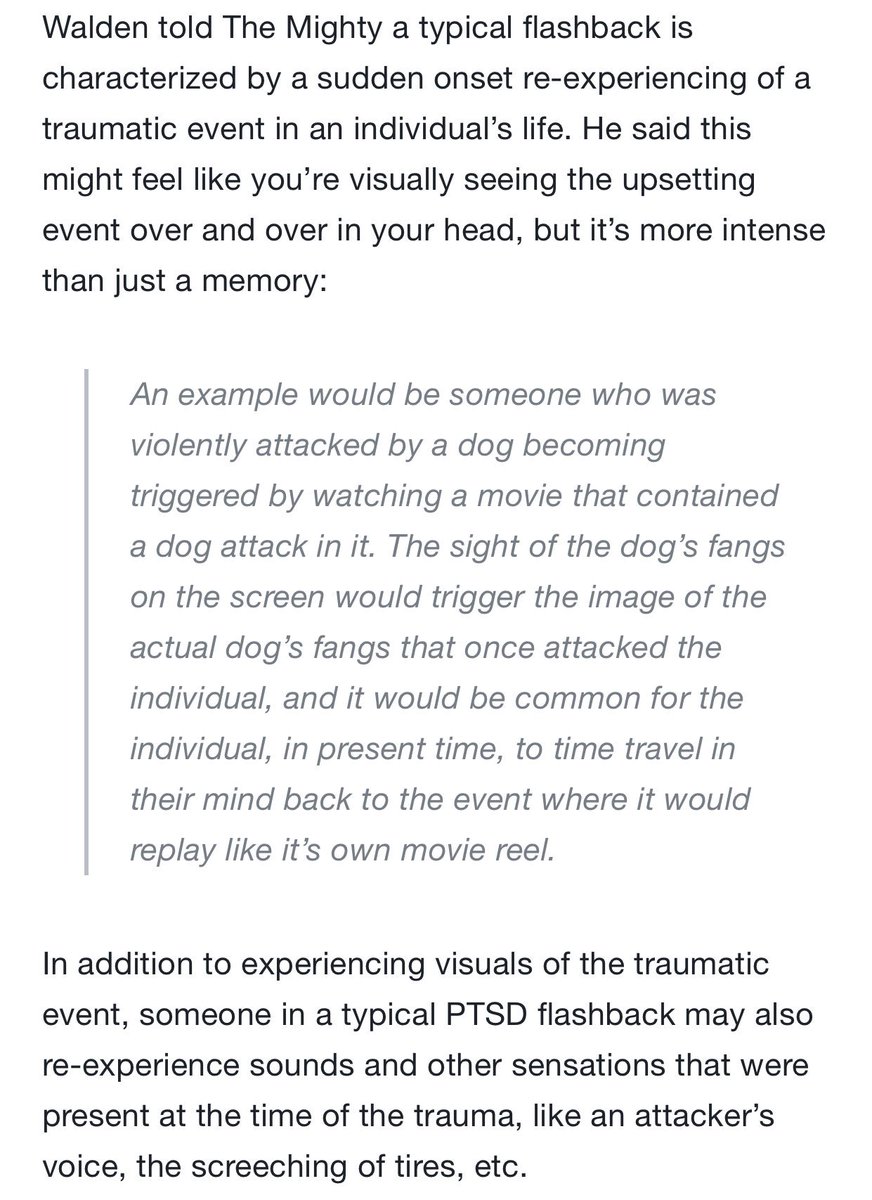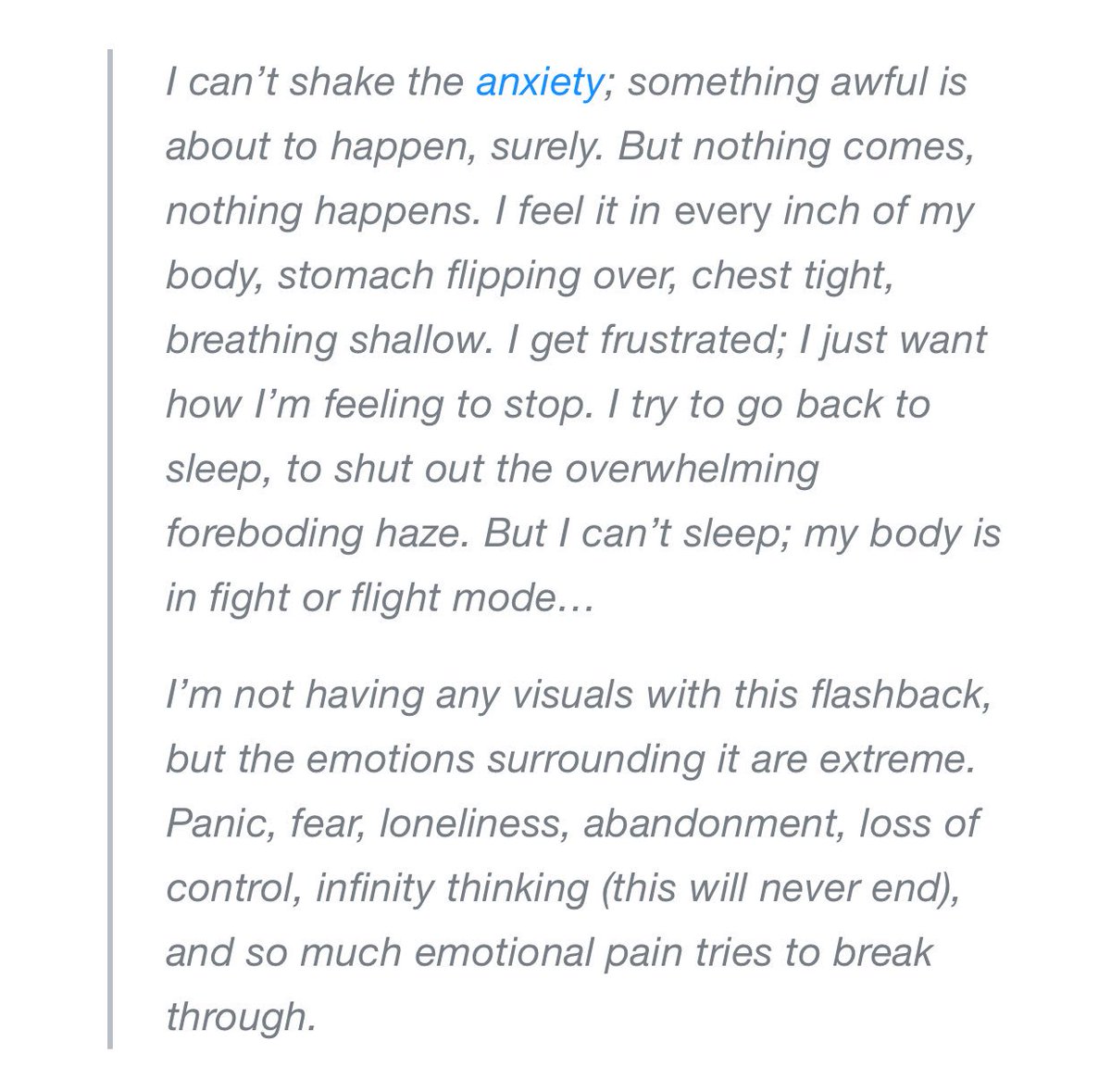

It is common for people with c-PTSD to feel dead inside, like we are not being our true selves around other people, or to feel like we are behaving like robots.
Hypervigilance means paying an extreme amount of attention to something or someone. We can be hypervigilant toward others’ reactions, body language, opinions of us, emotions, physical or mental wellbeing, and more.


